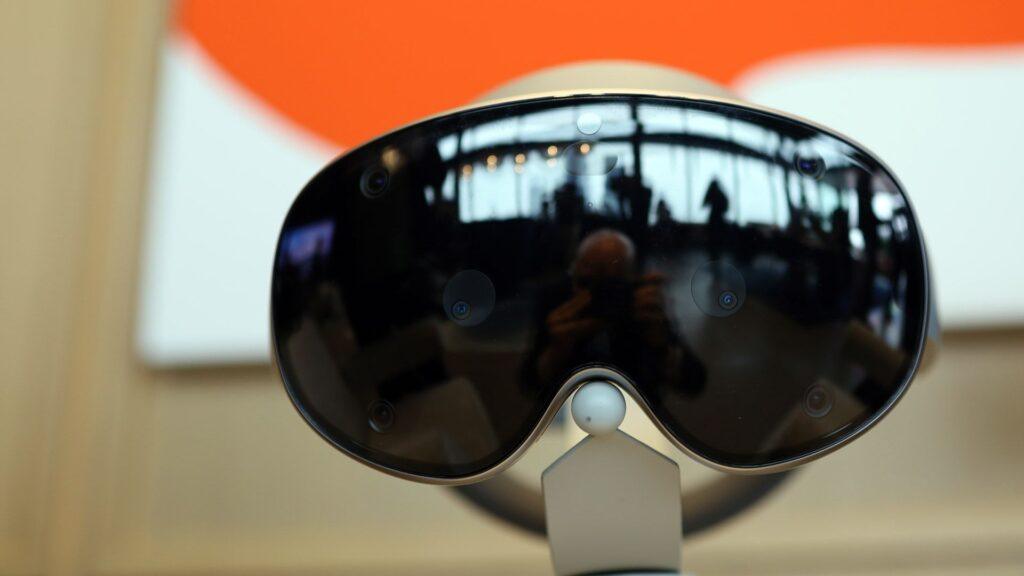“Where are the glasses?” I couldn’t resist asking Drew Blackard, Samsung’s VP of Mobile Product Management, when we sat down shortly after the unveiling of the company’s exciting new Samsung Galaxy XR spatial computing, Gemini AI-centric headset.
Blackard could not share specifics, but acknowledged, “it’s coming soon…And I’m going to use those words intentionally in the sense that it’s not like a far-fetched concept.”
While the glasses were nowhere to be seen at the Galaxy XR launch, Samsung announced a pair of frame partnerships with Warby Parker and Gentle Monster, and Blackard told me they’re “nearing the execution phase.”
“I guess you could call today a prank.” Although he promised we won’t have to wait too long, he added that we won’t see the glasses “this year.”
However, I pressed him a bit and asked if the release of the Galaxy XR headset and then the glasses were somehow out of whack, especially with the rapidly increasing interest in smart glasses that either deliver information to your eyes or combine your real world with an augmented one. Is this just a first step?
“I think it is,” Blackard said, “I don’t think it’s out of order. In that sense, they’re so related, and I think the announcement today helped paint the picture.”
Study of an AI heart
With that minor disappointment settled, I steered the conversation back to the new headset, talking about design choices and how they differ in some fundamental ways from what’s already on the market (yeah, looking at you Vision Pro).
The new Samsung Galaxy XR headset is a look, voice, and gesture control headset, arriving today (October 21) for $1,799 in the US and Korea.
While there are similarities to the Vision Pro, like the controls and even the external battery pack, it’s also significantly different. First, there’s the price, which is about half the price of the Vision Pro. Then there’s the weight, which is at least 65 grams less and arguably across a better balanced frame.
The big differentiator, however, is Gemini AI. It’s the kind of Apple Intelligence-infused Siri Vision Pro control I’d wanted but never materialized.
“It’s an artificial intelligence device,” Blackard said.
I wondered if Samsung and its partners would have brought the Galaxy XR to market two years ago when, for example, Gemini AI did not exist in its current form.
Blackard tried to put it into context for me and perhaps, without mentioning them by name, compare Samsung, Google and Qualcomm’s approach to Apple and its Vision Pro platform.

Starting with the Galaxy S24, it has been two years since Samsung developed AI phones. Recently, it has even become central to their wearables, such as the Galaxy Watch. “This became something that we all believed — Google and Qualcomm included — was an essential part of the experience,” Blackard told me.
The realization that you need a layer like the Gemini inside kind of harkens back to the Galaxy Gear VR days (that’s right, this isn’t Samsung’s first VR-ready headset). “User interfaces were challenging on them, or can be, historically,” he said.
Seeing immersive content in front of you doesn’t guarantee, Blackard told me, that you know how to navigate an interface that “can be very complex and overwhelming.”
With Gemini connected at a deeper level, there may be no need to learn how to use the interface on the Galaxy XR. “You can navigate with your voice, speak naturally, and it becomes a multimodal interface,” noted Blackard.
Being able to engage with the platform in this way is part of what makes Gemini essential to the experience. Like, AI is an actual layer in the system, which Blackard told me means it’s not something developers have to put in at the app level because “then you’re relying on all the app developers putting it into the app, and so the ability to scale the experience was difficult.”
Three amigos
He went on to describe some of the demos I saw that day that showed how Gemini helps you navigate Google Maps or gives tips on how to play a game using Google Circle to search. “Maybe a very specific game, and we at Samsung had no idea that the consumer would download that game and start playing it.”
It is this organic nature of Gemini integrated across the operating system that completes the picture. “It becomes an organic interaction with almost any app you open,” Blackard added.
Where it can be argued that Apple’s Vision Pro is the product of one strategic and corporate consciousness, the Samsung Galaxy XR is the product of the three partners (and occasional rivals): Samsung, Google and Qualcomm. Aligning the interests and demands of three tech titans can’t be easy. I asked Blackard if one company naturally took the lead or was considered the spearhead. Was it Samsung?
Of course, from the design perspective…Samsung is of course the leader in terms of industrial design and all the research and development that goes into making a product like this.
Drew Blackard, Samsung
“It’s an interesting question and I would say it’s probably been one of the more collaborative efforts in my time at Samsung. If you just take Samsung smartphones as an example, of course we use Qualcomm chips and they’re a very important partner in that. We use the Android operating system; they’re an important partner in that, but ultimately the end experience is defined by Samsung.”
However, he adds that due to the technical requirements, the end experience we see in the Galaxy XR could not have been delivered without the partnership. “Obviously, from a design perspective…Samsung is obviously a leader in terms of industrial design and all the research and development that goes into making a product like this.”
And yet, because AI is so central to the experience in the form of Gemini, the Galaxy XR wouldn’t come to market, Blackard added, “without Google having a leadership role in terms of software technology enablement… and of course Qualcomm providing the platform to build on.”
In other words, Samsung is the leader with fierce and indispensable support and contributions from Google and Qualcomm.
One thing I noticed missing from the Galaxy XR is Galaxy AI. Blackard confirmed that the new headset is unlikely to be the place for Samsung’s own brand of generative AI.
“The Galaxy AI capabilities, a lot of them are deeply integrated experiences within applications,” said Blackard, who described some of the photo editing and summarization features we’re now familiar with on our Galaxy devices.
“It’s a little different in the use cases that we’re seeing with XR and back to the multimodal aspects of Gemini AI. It brings to life everything you’re looking at, you can react to, it can understand your voice naturally and it can react. So it takes it a little bit beyond the traditional… I think it’s more like: the best solution to the problem has been Gemini AI.”
Follow TechRadar on Google News and add us as a preferred source to get our expert news, reviews and opinions in your feeds. Be sure to click the Follow button!
And of course you can too follow TechRadar on TikTok for news, reviews, video unboxings, and get regular updates from us on WhatsApp also.



